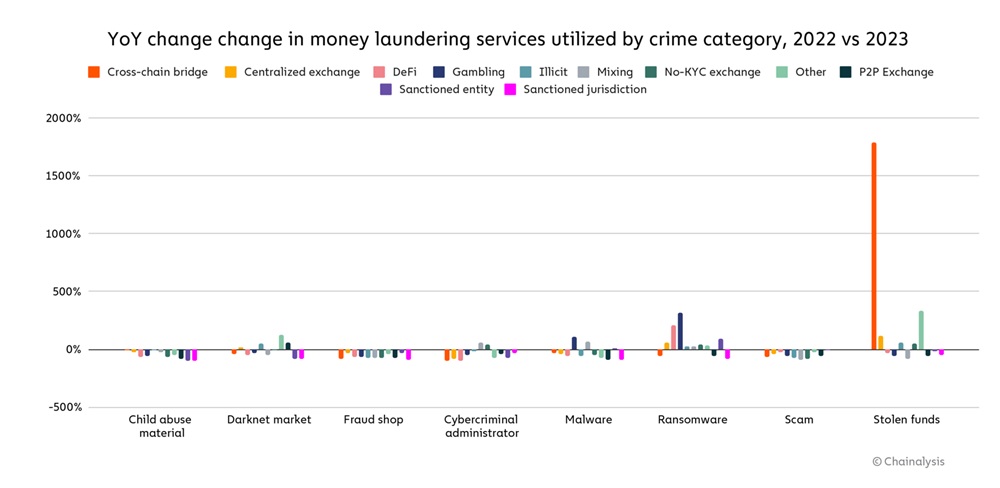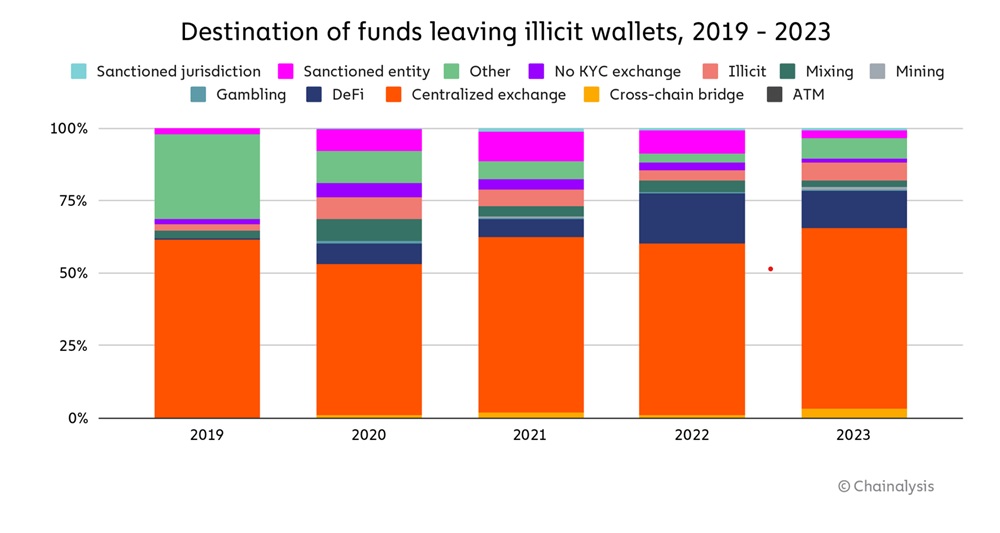Money laundering detected in 2023 fell to 22,3 billion dollars, almost 30% less than the figure of 31,5 billion dollars reached in 2022.
These are the data released by Chainalysis, the blockchain data platform dedicated to money laundering
Gambling platforms are also on the rise in money laundering, according to data from the Crypto Crime Report by Chainalysis.
The goal of money laundering is to obscure the criminal origins of funds so they can be accessed and spent. In the context of cryptocurrency crime, this generally means moving funds to services where they can be converted into cash, while often taking additional steps to hide where the funds came from. On-chain analysis of crypto money laundering therefore focuses on two distinct groups of on-chain services and entities:
- Intermediate services and portfolios. This category includes personal wallets, mixers, instant exchangers, various types of DeFi protocols, and other services both legitimate and illicit. Crypto criminals generally use services in this category to hold funds or to obfuscate their criminal origins, often obscuring the on-chain link between their source address and their current address.
- Fiat off-ramping services. This category includes any service where cryptocurrency can be converted into fiat currency, the most common being centralized exchanges. However, it can also include P2P exchanges, gambling services, and crypto ATMs. It is also important to consider nested services that operate using the infrastructure of centralized exchanges and allow fiat off-ramping, like many OTC trade desks.
In 2023, illicit addresses sent $22,2 billion of cryptocurrency to the services, which is a significant decrease compared to the $31,5 billion sent in 2022. Part of this decline can be attributed to an overall decrease in the volume of cryptographic transactions, both legitimate and illicit. However, the decline in money laundering activity was more significant, at 29,5%, compared to the 14,9% decline in total transaction volume.
Overall, centralized exchanges remain the primary destination for funds sent from illicit addresses, at a rate that has remained relatively stable over the past five years. Over time, the role of illicit services has shrunk, while the share of illicit funds going to DeFi protocols has grown. This trend should primarily be attributed to the overall growth of DeFi generally over the time period, but we should also note that the inherent transparency of DeFi generally makes it a poor choice for obscuring the movement of funds.
2023 does not differ much from 2022 in terms of the breakdown of types of services used for money laundering, but there was evidence of a slight decrease in the share of illicit funds moving to types of illicit services and an increase in funds moving to gaming services and bridge protocols.
A substantial increase in funds sent from ransomware to gambling platforms and in funds sent to bridges from ransomware wallets was also identified.













